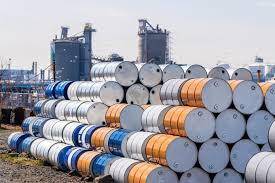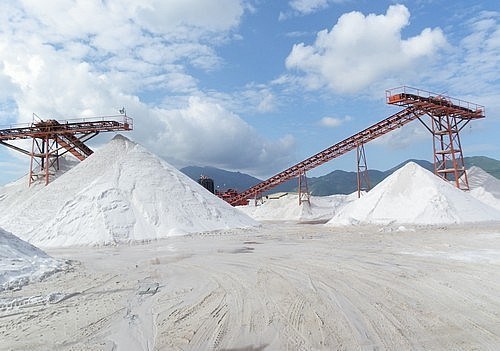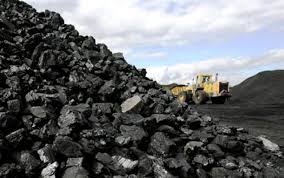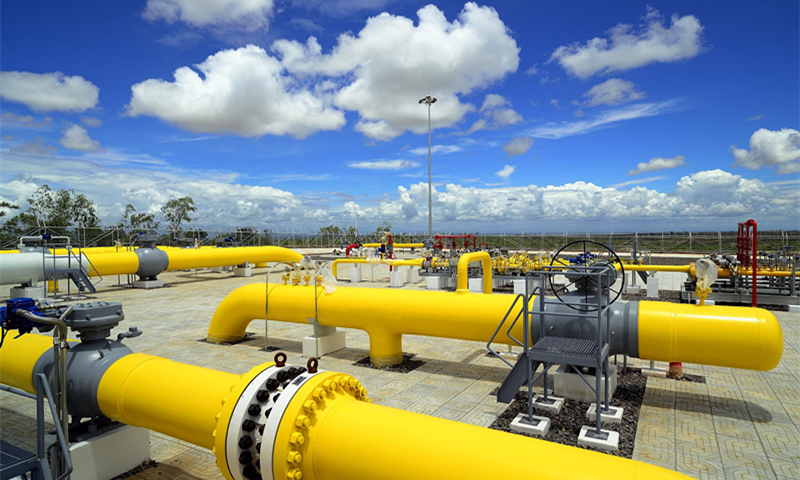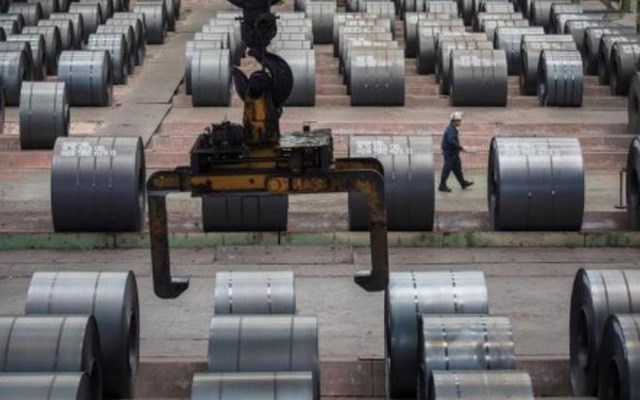Recently, public opinion has constantly questioned what has caused the price of a 40-foot shipping container (about more than 12 meters) to increase from 1,700 USD at the end of 2019 to nearly 11,000 USD in mid-2021?
In recent months, public opinion has repeatedly questioned what caused the price of a 40-foot shipping container (equivalent to more than 12 meters) to increase from $ 1,700 at the end of 2019 to $ 6,000 at the end of 2020 and nearly 11,000 USD in mid-2021?
Similarly, containers of 20 feet (slightly more than 6 meters) or equivalent used widely for the route between Asia and Europe also incur high prices.
The Ever Given super ship, one of the world’s largest container ships with a gross tonnage of more than 200,000 tons, has long been a symbol of globalization. By March 2021, this giant container ship had turned into a knot that blocked the vital maritime route through the Suez Canal, disrupting all movement through the canal.
The result of this congestion is supply chain disruptions and congestion in some ports, even the most remote ones. Waiting times for orders are long, and prices are also rising. According to experts, the total cost of such congestion is close to 400 million USD per hour.
Beyond this temporary crisis, what has caused the price of container shipping to skyrocket?
Christa Sys, shipping expert and professor at the University of Antwerp (Belgium), pointed out from the outset that if prices literally explode, it’s due to a combination of circumstances.
It was the event that Britain left the European Union (Brexit), the trade war between China and the US, and the COVID-19 pandemic. These factors have contributed to the high price of containers.
“There is practically no shortage of containers, in the truest sense of the word. But there was a shortage of containers at the right time somewhere, at the right time of the staff shortage. Then the reason the port in China closed because of sick staff…”, Professor Christa Sys explained.
In short, during the economic recovery period after the first blockade, on the one hand, manufacturing sites were unable to transport their goods because there were not many containers left to store goods or not enough labor to run the machines. hook. On the other hand, the receiving countries are also unable to “free up” the ports and secure the distribution, also due to the shortage of personnel.
Professor Christa Sys said a few days ago, about 100 ships were waiting off the coast of Los Angeles in the hope of being able to unload their cargo. It should also be noted that some intermediaries are willing to pay more to ensure they get their containers.
This explains the price boom. The 20 foot container market is now slowly filling up because of the peak season. Products for the holiday season have been sold and contracts have been signed.
(Artwork: AP).
Impact on consumers
The 20-foot container is widely used by consumers to transport goods from one place to another. Let’s do a little math. In such a container, you can fit about 4,000 shoe boxes. If the price is about 40 cents a pair, then after shipping it costs up to almost 3 euros.
The impact was even greater when heavier items were involved, such as bicycles, flat screens, cars, furniture, etc. In other words, companies had to calculate and consider moving those things. costs somewhere. In this case, the big loser is usually the end customer. In addition, as online commerce booms with the pandemic, so does delivery time.
COVID-19 and the congestion of the Suez Canal have prompted companies to reconsider. The need to reduce certain dependencies – especially for China – and the desire to repatriate some economic activities are among the ideas that are evoked, especially in the context of countries committing to reducing CO2 emissions, in which transportation is one of the factors that increase emissions.
However, is this possible? “It’s too early to talk about this. Some companies are planning to return to Europe, maybe not Belgium but Portugal, Spain or Latvia. But things are not so simple. Some technologies are difficult to repatriate, such as the semiconductor industry, on which the automotive industry is dependent,” explains Professor Christa Sys.
On the other hand, Professor Christa Sys added that container shipping only accounts for 16% of the total volume of goods, of which the majority is carried out in large quantities. Also, for freight, people don’t like having to change trains but prefer direct routes, especially since transshipment is very expensive.
However, Professor Christa Sys said: “In Antwerp we are fortunate to have a direct shipping route to many points but not to every country and every seaport. Therefore, not all have the necessary infrastructure to consider the possibility of repatriation of industrial activity.”
If the relocation is complicated, the question of the monopoly of some companies in this field will also arise due to the explosion in prices. It is, above all, a supply and demand crisis, said Professor Christa Sys.
She argues that without a real monopoly, the market always has choices. However, business leaders must renegotiate their contracts and review them over a longer period of time, as has been done in the past.
This view is also shared by Mr. Wilfried Lemmens, President of the Royal Belgian Shipowners’ Association: “There are a number of big players but none of the shipowners are large enough to price in the market, which is still fragmented. Even at the national and international level, China does not have the right to control prices by itself,” said Wilfried Lemmens.
Chinese element
Professor Christa Sys said that there is a shift in activities from China to other countries. In this regard, Mr. Geert Noels, economist and CEO of the company Econopolis affirmed that the price of shipping containers is something that economists have been watching closely for a long time. It is a leading indicator that allows world trade to be tracked across several routes to capture the pulse of economic activity.
In the context of the COVID-19 epidemic, the price of bulk transport, through the Baltic Dry Index, has also increased by 5 times. However, Mr. Geert Noels believes that the price increase is not due to cyclical reasons.
According to him, there is a type of traffic congestion related to COVID-19 and recovery, which is now gradually being resolved. There is also the Suez crisis. All of these cause short circuits that disrupt a smooth and efficient system.
Besides, Mr. Geert Noels also thinks that the system is changing. Some blocs are exploring their power, like China. Some countries have discovered that authoritarian organizations are being created in shipping and are punishing competition.
“Don’t be naive, the Chinese play a very important role. They use their power to put more pressure on prices,” said Geert Noels.
This affects many import and export companies. It is an increase in freight rates while all products, components and raw materials in general increase. According to many contractors, the issue now is not whether you pay a certain price and negotiate, but only whether you receive the component or not. They have no room for negotiation.
Referring to solutions to reduce the problem of rising container prices, Mr. Geert Noels analyzed that when there is an increase in prices, there will be pressure to increase capacity or find other possible avenues.
There are manufacturers who are incentivized to serve certain niches, specific production chains as is the case with the semiconductor industry. However, that will not happen in the short term.
Regarding the choice of other means of transport, according to Mr. Geert Noels, there are not always viable alternatives. Everything has been “boxed” to the point where it’s hard to find a short-term solution.
Regarding air freight, this is not feasible on a large scale because it is too expensive. And this is not a long-term solution, Mr. Geert Noels emphasized.
T&G International Joint Stock Company
Address: 352 Hue Street, Le Dai Hanh Ward, Hai Ba Trung District, Hanoi
Hotline: 0345786803
Email: hrm@tginterjsc.com
Website: http://tginternationaljsc.com




